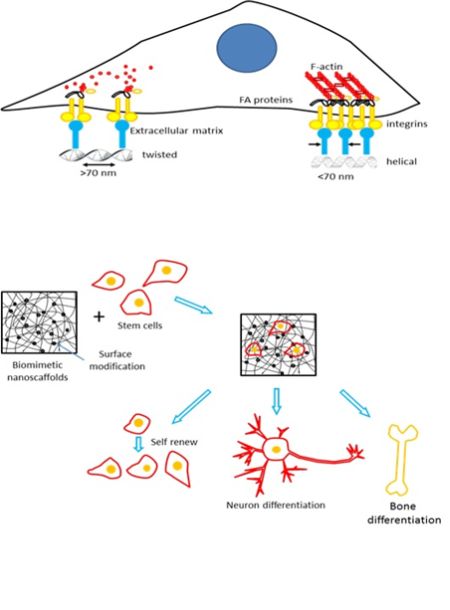|
| Friday, 1 November 2013, 13:30 HKT/SGT | |
| |  | |
Source: NIMS | |
|
|
|
TSUKUBA, Japan, Nov 1, 2013 - (ACN Newswire) - Nanotechnology may provide new strategies for regenerative medicine, including better tools to improve or restore damaged tissues, according to a review paper by Taiwanese researchers.
 | | How Nanotechnology Can Advance Regenerative Medicine |
Published in the journal Science and Technology of Advanced Materials, the paper summarizes the current state of knowledge on nanotechnology with application to stem cell biology. (The term "nanotechnology" refers to the design, construction, generation and use of nanoscale (1-100 nm) structures or materials.)
Stem cells are considered an important potential source for repairing damaged human tissues. Researchers have found that the adhesion, growth, and differentiation of stem cells are likely controlled by their surrounding microenvironment, which contains both chemical and physical cues. These cues include the "nanotopography" of the complex extracellular matrix or architecture that forms a network for human tissues.
In their review paper, Yang-Kao Wang and colleagues describe studies showing how this nanotopography (which includes nanosized pores, grooves, ridges, etc.) plays important roles in the behaviour and fate of stem cells. The authors also discuss the application of nanoparticles to stem cell isolation, tracking and imaging; how to translate nanotechnology from two to three dimensions; and the potential limitations of using nanomaterials in stem cell biology.
The paper concludes that "understanding [the] interactions of nanomaterials with stem cells may provide knowledge applicable to [the development of improved] cell-scaffold combinations in tissue engineering and regenerative medicine."
Related information:
Nanotechnology in the regulation of stem cell behavior. Sci Technol Adv Mater Vol. 14 (2013) p. 054401
DOI: http://dx.doi.org/10.1088/1468-6996/14/5/054401
Published 11 October 2013
For more information about this paper, please contact:
Yang-Kao Wang
GIBMTE, Taipei Medical University
250 Wuxing St., Xinyi Dist.
Taipei City 110, Taiwan
Email: humwang@tmu.edu.tw
Phone: +886-2-27361661, ext 5200
Fax: +886-2-27395584
Media contacts:
National Institute for Materials Science, Tsukuba, Japan
Email: stam_office@nims.go.jp
Tel. +81-29-859-2494
Press release distributed by ResearchSEA for National Institute for Materials Science.
Topic: Research and development
Source: NIMS
Sectors: Science & Nanotech, Science & Research, BioTech
https://www.acnnewswire.com
From the Asia Corporate News Network
Copyright © 2024 ACN Newswire. All rights reserved. A division of Asia Corporate News Network.
|
|
|